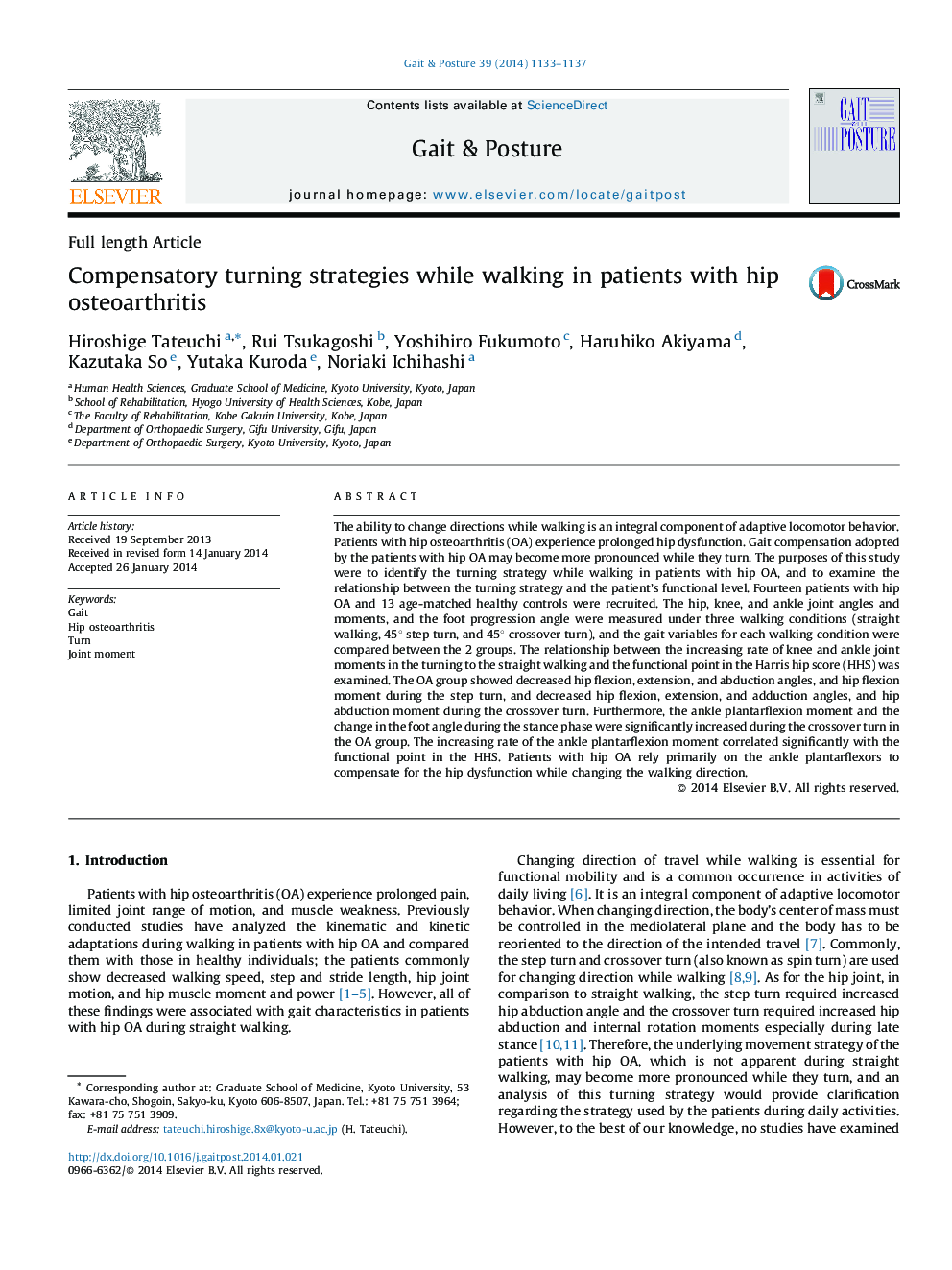| کد مقاله | کد نشریه | سال انتشار | مقاله انگلیسی | نسخه تمام متن |
|---|---|---|---|---|
| 6206323 | 1265643 | 2014 | 5 صفحه PDF | دانلود رایگان |
- We aimed to identify the turning strategy of patients with hip osteoarthritis during walking.
- We measured gait variables during straight walking, 45° step turn, and 45° crossover turn.
- Patients with hip osteoarthritis rely primarily on the ankle plantarflexors while turning.
- Increased ankle plantarflexion moment while turning was associated with high functional level.
The ability to change directions while walking is an integral component of adaptive locomotor behavior. Patients with hip osteoarthritis (OA) experience prolonged hip dysfunction. Gait compensation adopted by the patients with hip OA may become more pronounced while they turn. The purposes of this study were to identify the turning strategy while walking in patients with hip OA, and to examine the relationship between the turning strategy and the patient's functional level. Fourteen patients with hip OA and 13 age-matched healthy controls were recruited. The hip, knee, and ankle joint angles and moments, and the foot progression angle were measured under three walking conditions (straight walking, 45° step turn, and 45° crossover turn), and the gait variables for each walking condition were compared between the 2 groups. The relationship between the increasing rate of knee and ankle joint moments in the turning to the straight walking and the functional point in the Harris hip score (HHS) was examined. The OA group showed decreased hip flexion, extension, and abduction angles, and hip flexion moment during the step turn, and decreased hip flexion, extension, and adduction angles, and hip abduction moment during the crossover turn. Furthermore, the ankle plantarflexion moment and the change in the foot angle during the stance phase were significantly increased during the crossover turn in the OA group. The increasing rate of the ankle plantarflexion moment correlated significantly with the functional point in the HHS. Patients with hip OA rely primarily on the ankle plantarflexors to compensate for the hip dysfunction while changing the walking direction.
Journal: Gait & Posture - Volume 39, Issue 4, April 2014, Pages 1133-1137
